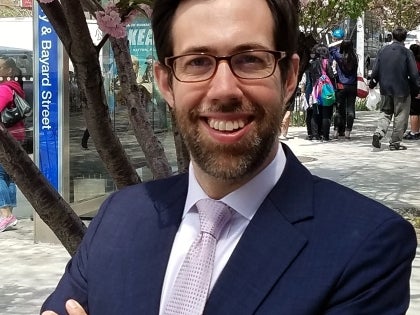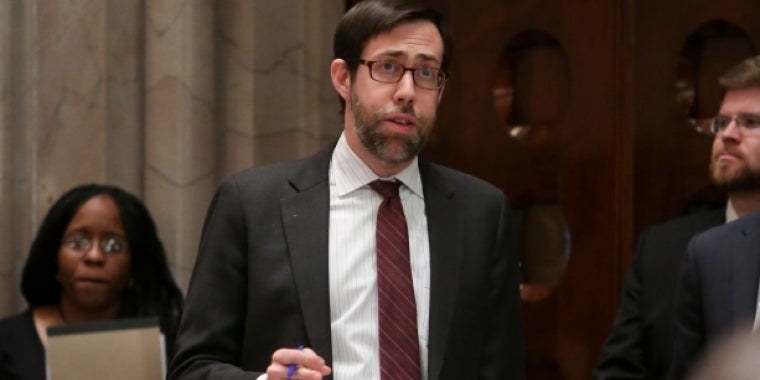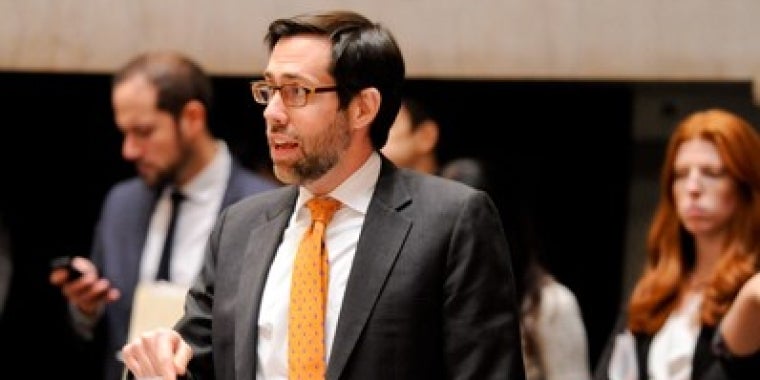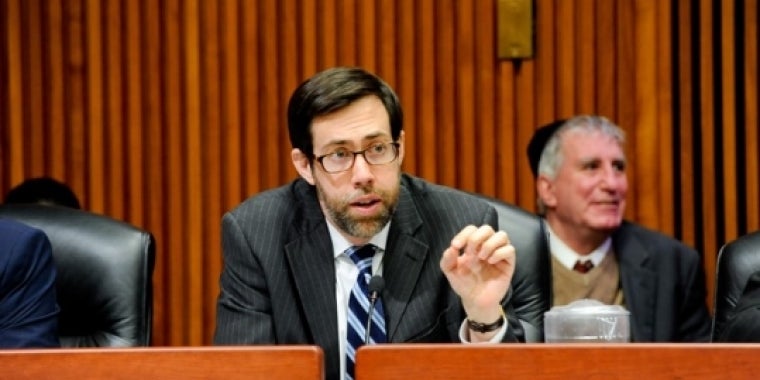
Senator Squadron, Bp Stringer, Assemblyman Kavanagh Release Report Revealing Nycha Tenants’ Concerns About Safety in Nyc Public Housing
September 21, 2012
-
ISSUE:
- Constituents Corner
Only 44% of Lower East Side tenants report having lobby doors with working locks, and less than 50% say they live in buildings with working intercom systems
While $42 million for security cameras remains unspent, 80% of residents in buildings without cameras say they would feel safer with the surveillance technology
September 21, 2012, New York, NY – State Senator Daniel Squadron, Manhattan Borough President Scott Stringer, and Assemblyman Brian Kavanagh today released a report, “Protecting NYCHA Communities,” that surveyed tenants’ concerns about public safety in ten New York City Housing Authority (NYCHA) developments on the Lower East Side. The results show that residents often fear for their safety and that housing developments lack basic protections, including functional locks for buildings, reliable intercom systems and regular security patrols.
Among the most troubling results:
- 65% of survey respondents do not feel that there are sufficient protections to keep trespassers from entering buildings;
- Only 45% of survey respondents indicated that they have lobby doors with working locks;
- Only 49% of survey respondents indicated that they have a working intercom system at their development;
- Almost 50% of survey respondents think that the police presence in their building is not adequate; and
- Nearly 80% of survey respondents who do not have security cameras at their developments indicated that they would feel safer if they did have security cameras.
The full report is available below.
“NYCHA residents clearly have deep concerns about safety in their homes, and for good reason. When over half of residents lack basics like locks and intercoms -- not to mention security cameras -- we shouldn't be surprised,” said Senator Daniel Squadron. “Most frustratingly, there's a solution and it's being left on the table. Expanding security cameras with millions in unspent funds, combined with these other key improvements, will go a long way toward allaying residents concerns and changing their reality.”
“No tenant anywhere in the City should have to live in a building without functional doors that lock and other basic safety protections,” said Manhattan Borough President Scott Stringer, at a press conference on the Lower East Side. “While recent proposals to restructure the agency’s board and fill job vacancies have been positive steps, we still need to bring NYCHA’s security operations into the 21st century, using money that is waiting to be spent.”
“Feeling safe in our own homes and neighborhoods should not be a privilege, but a right enjoyed by everyone,” said Assemblymember Brian Kavanagh. “Through this survey, residents of our community are speaking out on behalf of public housing residents across the city. They’re saying that there are basic security needs that are simply not being met. We need to do better.”
In recent weeks, NYCHA has come under criticism for failing to spend some $42 million in funding from local elected officials for security cameras at more than 80 NYCHA developments. Although the agency has recently committed to spending the money by this fall, the delays underscore the need for broad-based reform of NYCHA’s management and operations.
Another key issue is a 1994 Memorandum of Understanding between the New York City Housing Authority and the NYPD, under which NYCHA must reimburse the City for “special police services.” This agreement makes NYCHA the only residential landlord in the city required to pay the NYPD for police protection; each year NYCHA pays the NYPD over $70 million for these services.
As chronicled in a letter addressed to the City from downtown elected officials, however, many NYCHA-based officers are frequently redeployed to non-NYCHA operations. Half of the tenants surveyed said that the police presence in their building is inadequate.
In their recommendations, Borough President Stringer, Senator Squadron, and Assemblymember Kavanagh suggested that that the MOU be renegotiated in a way that does not drain the Housing Authority of needed resources, while also maintaining NYPD force strength. The report also urges that the Housing Authority develop a clear and transparent program for quickly installing security cameras, as well as repairing and monitoring broken doors, locks and intercoms.
A third recommendation is that the City Council act on existing legislation that would require the NYPD to make crime statistics at each NYCHA housing development available to the public on the authority’s website. The report also urges NYCHA to expand its Resident Watch Program and boost Section 3 employment opportunities for NYCHA residents.
Finally, the report proposes that NYCHA continue and expand upon programs that offer recreation, counseling, and other services targeted at youth and young adults who may otherwise be prone to gang activity and crime.
The survey, conducted from July 13 to August 3, included complexes on Manhattan’s Lower East Side. Over 500 responses were collected by representatives from the offices of Senator Squadron and Borough President Stringer. Ten developments in the Lower East Side were surveyed, including Campos Plaza I, Gompers, LaGuardia Houses, Jacob Riis Houses I & II, Rutgers Houses, Seward Park Extension, Smith Houses, Vladeck Houses and Wald Houses.
“The Legal Aid Society agrees with the findings of this report regarding the safety and security problems that NYCHA residents are experiencing in their homes,” said Judith Goldiner, Attorney-in-Charge of The Legal Aid Society's Civil Law Reform Unit. “To that end, we believe NYCHA should stop its payments of over $72 million made annually to the NYPD under the MOU and instead spend the money on ensuring the physical security of residents through such measures as immediately securing door access to buildings, installing working and dependable intercoms and improving lighting throughout its buildings.”
“My children and I have lived in the Vladeck Houses for more than 30 years. Within the past decade, the NYCHA facilities we call home have become a place where residents no longer feel safe,” said Nancy Ortiz, RA President of Vladeck Houses. “NYCHA has raised our rents and imposed new surcharges, but our quality of life has diminished greatly and our families feel more susceptible to rising crime. We understand that while security cameras may not stop crime, they do deter it, and feel that adding them is an important step towards making sure our families once again feel safe in this community.”
“It is time for NYCHA to put cameras where they are needed and to quickly fix doors, locks and intercoms,” said Carmen Orta, President of the Seward Park Extension Tenant Association. “As a NYCHA resident, and as a Resident Association president, I am confident that security cameras will make residents feel more comfortable and safe in their own homes. I am glad that NYCHA is taking steps to help us obtain security cameras, and I look forward to working them in the future. I also feel confident that the installation of security cameras will have a positive impact on the Seward Park Resident Watch. Not only will security cameras make Resident Watch volunteers feel more safe as they perform their duties, but they will also encourage others to volunteer and join the Resident Watch.”
###



